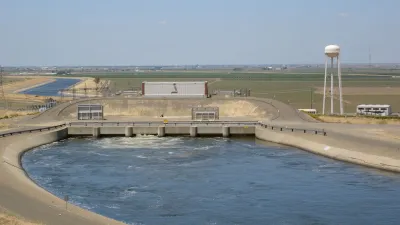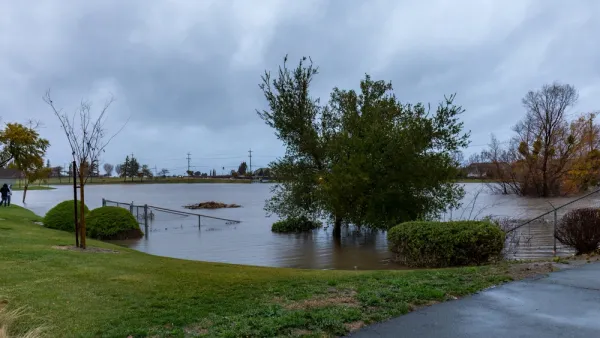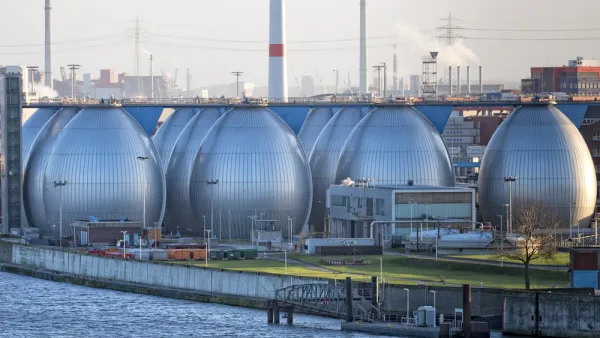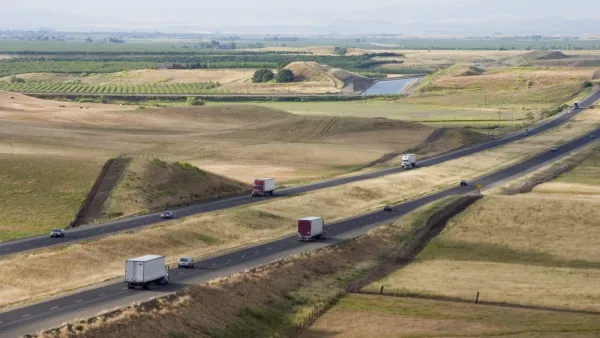Golf courses and Los Angeles are the most frequently cited public enemies when droughts hit California, but it isn’t that simple. Recent articles have debunked myths about water use in the Golden State by providing a more accurate portrait of use.

Alex Park and Julia Lurie write of the water used to produce California’s fruits, veggies, and nuts—part of what achieves California it’s “break basket of the world” status. For instance, 92 percent of the nation’s strawberries are grown on the central coast—one of the regions hit hardest by the current drought. According to the article, one head of broccoli requires 5.4 gallons of water.
James McWilliams piggybacks on the coverage by Mother Jones to talk about the crop that uses the most water in the state: alfalfa. “Grown on over a million acres in California, alfalfa sucks up more water than any other crop in the state. And it has one primary destination: cattle,” writes McWilliams. Moreover, “If Californians were eating all the beef they produced, one might write off alfalfa’s water footprint as the cost of nurturing local food systems. But that’s not what’s happening. Californians are sending their alfalfa, and thus their water, to Asia.” In effect, California exports 100 billion gallons of water a year to Asia.
Molly Peterson addresses two of the most commonly cited water wasters: cemeteries and golf courses. Peterson details the water conservation methods used by the Oak Creek Golf Club in Irvine. “Far and away the biggest conservation measure at Oak Creek is one that the Irvine Ranch Water District offers mostly to large-scale businesses: recycled wastewater. The district recycles treated wastewater through a system separate from drinking water; recycled water comes through pipe painted purple to signal it’s not for drinking.”
FULL STORY: It Takes How Much Water to Grow an Almond?!

Analysis: Cybertruck Fatality Rate Far Exceeds That of Ford Pinto
The Tesla Cybertruck was recalled seven times last year.

National Parks Layoffs Will Cause Communities to Lose Billions
Thousands of essential park workers were laid off this week, just before the busy spring break season.

Retro-silient?: America’s First “Eco-burb,” The Woodlands Turns 50
A master-planned community north of Houston offers lessons on green infrastructure and resilient design, but falls short of its founder’s lofty affordability and walkability goals.

Test News Post 1
This is a summary

Analysis: Cybertruck Fatality Rate Far Exceeds That of Ford Pinto
The Tesla Cybertruck was recalled seven times last year.

Test News Headline 46
Test for the image on the front page.
Urban Design for Planners 1: Software Tools
This six-course series explores essential urban design concepts using open source software and equips planners with the tools they need to participate fully in the urban design process.
Planning for Universal Design
Learn the tools for implementing Universal Design in planning regulations.
EMC Planning Group, Inc.
Planetizen
Planetizen
Mpact (formerly Rail~Volution)
Great Falls Development Authority, Inc.
HUDs Office of Policy Development and Research
NYU Wagner Graduate School of Public Service




























